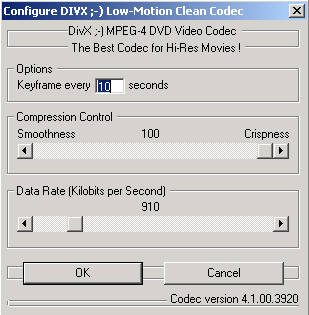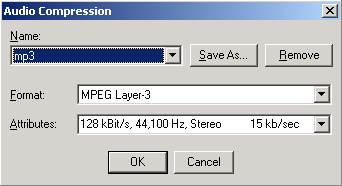MPEG-4: Optimization of Picture Quality and Data Rate
Choice Of The MPEG-4-Codec: Fast Vs. Slow Motion, Continued
The slow motion codec is suitable for landscape shots or sequences with a fixed camera. The codec achieves very good results with low resolutions.
The behavior of the slow motion codec is completely different. As the name suggests, it has been specially developed for slow video sequences. This codec demonstrates its superiority compared to the fast motion codec for films with little movement content and fixed camera positions. In contrast to the fast motion codec, the average data rate is set pretty precisely. This is achieved by setting the maximum data rate, which then closely corresponds to the average data rate. Thus, it is much easier to determine the file size of a film sequence to fit it on a single CD-ROM.
As the codec cannot be swapped or changed during the MPEG-4 encoding process, the content of the DVD film has to be roughly estimated right from the start. The fast motion codec is clearly to be recommended for action films. On the other hand, the slow motion codec is, at any rate, the better choice for landscape shots or fixed camera settings.
The audio data stream is rather small compared to the video content. A very good stereo sound quality can be achieved with a data stream of 128 kBit/s and a frequency response of 44 KHz.
Choosing the right audio codec is less complicated. The Fraunhofer MP3-codec is best suited, which can be adjusted both in terms of bit and sampling rate. A very good stereo sound quality is achieved with the 128 kBit/s (15 kB/s) and 44 KHz setting.
Get Tom's Hardware's best news and in-depth reviews, straight to your inbox.
Current page: Choice Of The MPEG-4-Codec: Fast Vs. Slow Motion, Continued
Prev Page Optimization Of Flask Mpeg: Intel And AMD CPUs Next Page Focus On The MPEG-4 Fast Motion Codec
